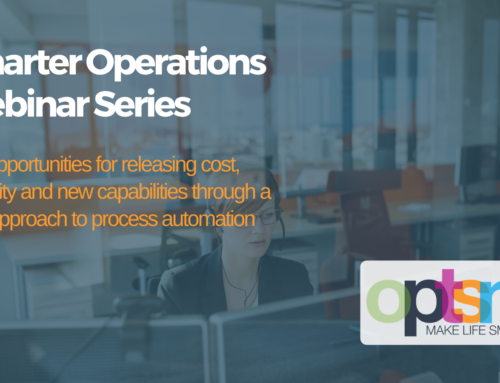Accounts Payable is a common application for Robotic Process Automation. It’s an essential activity that is mundane, repetitive and accuracy is essential. It’s an overhead – any savings made here are delivered straight to the bottom line. There is also the opportunity for finance functions to redeploy resource from this activity to Accounts Receivable to reduce debtor days (and increase cashflow).
However, this has traditionally been a challenging area for automation. Despite many efforts in process re-engineering and deployment of ERP systems, Optical Character Recognition (OCR) and Electronic Data Interchange (EDI) document management and eInvoices it is still labour intensive in most organisations.
The challenges exist due to multiple factors:
- Every supplier creates their own invoices – meaning a high variability of document format. Worse still, there is little or no control over suppliers changing the format as their processes evolve. This leads to tedious manual handling to log and capture the invoices.
- Data as invoices arrive is unstructured – meaning staff either have to check and verify each invoice individually or have to enter the data into another system to create the structured format.
- Even when data is structured, the validation process throws up discrepancies – does the value match the Purchase Order, were the appropriate Goods received in the Goods Receipt Notice?
- Finally the payment authorisation needs to be gathered from the appropriate cost centre owner or delegated authority – some needing more chasing than others!
We’ve seen these challenges many times. The example below is based on a combination of cases. In this example we have an Accounts Payable team of 3 people – the business purchases components for assembly and resale, requiring them to manage an international supply chain.
Every month several thousand invoices arrive from their suppliers worldwide. Every invoice needs to be logged to ensure that nothing is missed.
The invoice detail needs to be captured and validated. This involves an extremely manual process – and some invoices run to many pages of line items. Much of the activity at this step is data entry into the finance system. Once all of the data is entered it can then be matched against the appropriate purchase order and goods receipt notice. A complication at this level is exchange rates – in some cases the time between quotation and delivery can be weeks apart and exchange rate variation needs to be checked (and was not always the reason for the figures being different).
Supplier queries needed raising, logging, tracking and updating when resolved – for the most part requiring little dialogue to resolve beyond an updated invoice.
For some of the transactions, once all of the figures were entered then authorisation was straightforward, but others required management sign-off. In a hectic environment some managers are better at signing off their authorisation list promptly than others – meaning that time is spent chasing (as well as interruptions from suppliers chasing overdue payments that were still in the authorisation queue).
Finally, a payment run was carried out using a report generated from the finance system.
A Fresh Approach – Simple, Fast and Effective
When OPTSM were first called in, a simple review of the process for feasibility enabled us to identify areas where it may be possible to apply Robotic Process Automation (RPA). This took around 90 minutes in all – including viewing the team carrying out the process.
Viewing front-line users involved minimal disruption – 15-20 minutes of viewing the tasks they undertook on screen (recording the activities using Zoom).
From the process recordings it was possible to identify that over 75% of the activity on a monthly basis could be automated using a software robot and it was possible to provide a fixed monthly price. Carrying out process analysis in this way is extremely time-efficient – the process recordings formed the core of the functional and technical specification and the ‘training’ for the software robot.
The software robot – Jo – was given a dedicated email address where all invoices were sent. Jo is able to quickly download, log and extract all of the data from PDF invoices – creating a structured data file.
From the structured data, Jo then validates values against expected figures – doing this in minutes. Jo maintains a daily log of exchange rates in a look-up file, making appropriate conversions simple.
Jo produces a query report and notifies suppliers of the nature of the query, at the same time producing a report for the Accounts Payable team so they know where to pick up from.
Jo notifies authorising managers about the payment requests that they need to authorise – with a simple Excel report and links to invoices in the company shared drive. All the authorising manager needs to do is update a value in the spreadsheet. If the value has not been updated within the desired time-frame, Jo starts sending reminders until completed (very politely of course).
Finally, when invoices have been validated and authorised, Jo prepares the payment report. Jo could action the payments if required – but for the time being everybody is more comfortable having a human doing the payment run.
What’s the benefit to the client?
75% of the tasks (totalling probably more than 85% of the resources needed to run the process) are now being executed completely by Jo. Moreover, Jo is able to complete this activity in a fraction of the time – completely error free.
This has almost completely freed up the 3 staff in the Accounts Payable function – what happened to them? In this case the client has redeployed the people to more valuable activities.
Firstly, the client has made a big push on chasing outstanding payments and improving credit control processes – having extra hands has accelerated progress and achieved an immediate improvement in cashflow.
The experience of automating the AP function has shown the client what is possible elsewhere within the business – with one member of the team proving particularly adept at finding additional opportunities to reduce cost / increase capacity. They are now taking on a process optimisation role.
In the final analysis, automating the process with Jo frees up the capacity of 2.5 Full Time Equivalents (FTE) and their redeployment both improves cashflow and reduces cost. All at a cost of less than one FTE. Development and roll-out into production typically takes 6 weeks and because the fixed monthly fee for Jo is paid monthly, the benefits are realised immediately.





